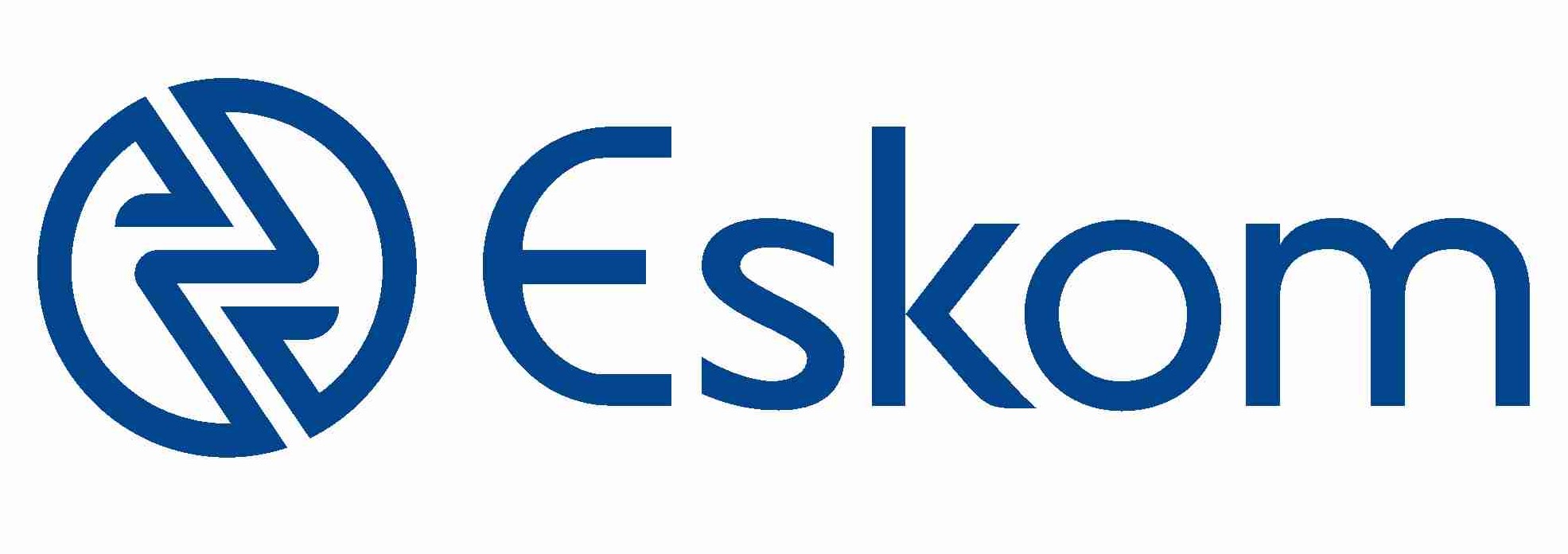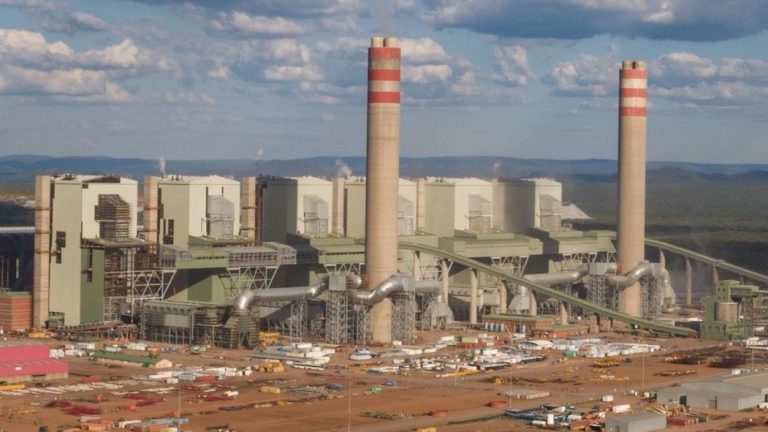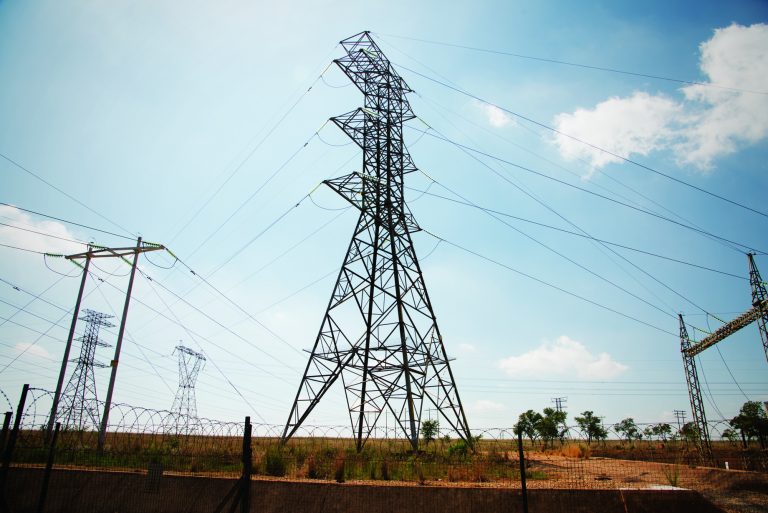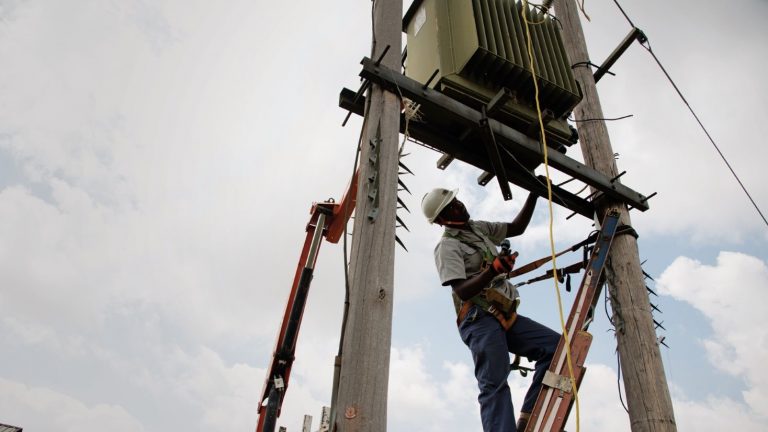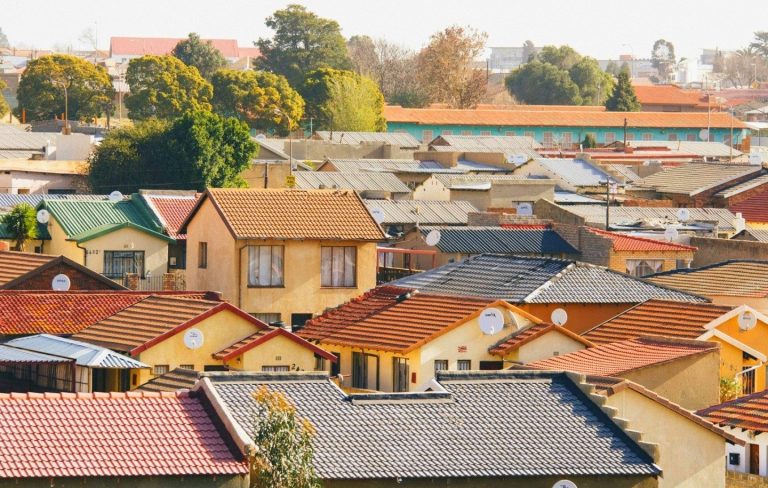Eskom releases its interim results for the period ended 30 September 2023
Key highlights of the interim results
• Net profit of R1.6 billion after tax
• Favourable tariff increase of 18.65% resulted in an increase in revenue from R144.8 billion in September 2022 to R158.6 billion in September 2023 despite a 5.9% decline in sales volumes
• Received R41 billion to date of the R78 billion Government debt relief committed for FY2024
• Arrear municipal debt remains an area of concern and has escalated to R70 billion
• Gross debt securities and borrowings remained high at R442.7 billion, including the subordinated Government loan of R16 billion at 30 September 2023
• Energy availability factor (EAF) deteriorated to 55.30% resulting in frequent implementation of loadshedding
• Renewable and short-term independent power producer (IPP) programmes produced 8.9TWh. Overall, these programmes delivered about 2.7TWh less than target, contributing to the generation capacity shortfall
• Eskom and IPP-owned open-cycle gas turbines (OCGTs) produced 2.9TWh at a cost of R18 billion, against R15.8 billion spent in producing 2.1TWh up to September 2022
• Distribution network performance remained stable while Transmission performance experienced a decline
Wednesday, 13 December 2023: Today, Eskom published its interim results for the six month–period ended 30 September 2023. Despite continued financial and operational challenges, Eskom recorded a net profit after tax of R1.6 billion. Revenue grew to R158.6 billion, a 9.5% increase from the R144.8 billion in September 2022, due to the favourable impact of the tariff increase for the 2024 financial year. However, sales volumes experienced a decline, dropping by 5.9% from 97.6TWh in the same period last year to 91.9TWh. The decline was largely because of supply constraints, coupled with lower electricity demand from customers due to difficult economic conditions and the impact of increased embedded self-generation such as solar photovoltaic (PV) technologies and wind. Non-technical losses, including the theft of electricity through illegal connections, meter tampering and ghost vending, also contributed to declining sales volumes.
Eskom’s financial performance in the first half of the year tends to be better than the second half, with the winter period typically characterised by higher tariffs and sales volumes than the summer period. In addition, less maintenance is performed in winter to ensure adequate supply to sustain the increased demand and to offset lower winter production by renewable IPPs.
Plant availability continued to deteriorate, resulting in more frequent loadshedding at higher stages on average than in the previous year. In total, loadshedding was required on 183 days for 3 578 hours during the period, which equates to 149.1 days. EAF was at 55.30%, lower than the 60% target for September 2023, and also lower than the target of 65% for the month of March 2024. Renewable and short-term IPP programmes delivered about 2.7TWh less than target, contributing to the overall generation capacity shortfall. The supply constraints continued to have an adverse effect on financial performance, with Eskom and IPP-owned OCGTs producing 2.9TWh at a cost of R18 billion. Primary energy costs grew by 10.1%, increasing to R85.1 billion from R77.3 billion in September last year, placing a further strain on Eskom’s finances.
“The unsatisfactory operational performance and depressed economic conditions continue to have a direct impact on Eskom’s financial sustainability, requiring us to make difficult trade-offs between liquidity, the utilisation of OCGTs to minimise loadshedding for the benefit of the economy, as well as accommodating spend on our operational recovery and capital expenditure programmes,” remarked Eskom’s Acting Group Chief Financial Officer, Martin Buys.
“Our financial performance also remains hampered by an inadequate tariff path, above-inflationary cost increases, non-payment by some customers as well as high debt servicing costs. Our turnaround plan focuses on addressing these key areas. We are also pinning our hopes on the Government debt relief, the municipal debt relief programme, as well as the migration to cost-reflective tariffs,” added Buys.
Eskom’s debt remains unsustainably high. To address this, Government has committed a total of R78 billion in debt relief for the 2024 financial year, of which R16 billion was received in August, R20 billion in October and R5 billion in December 2023, with the remainder to be received in the current financial year. Gross debt securities and borrowings stood at R442.7 billion at 30 September 2023, including the R16 billion subordinated Government loan received by 30 September 2023. Over the six month-period, Eskom repaid interest of R18.1 billion and capital of R30.9 billion. The repayments were made from surplus operating cash flows, supported by Government through the Eskom Debt Relief Act, 2023.
“Government’s debt relief solution will go a long way towards improving Eskom’s financial sustainability and liquidity in the short to medium term, the impact of which we have already seen with the recent credit upgrades. We continue to execute our turnaround plan to improve financial and operational performance in the medium to long term,” said Eskom’s Acting Group Chief Executive, Calib Cassim.
Progress is being made on the new build programme, with Kusile Unit 5 expected to be synchronised to the grid by the end of this calendar year and achieving commercial operation around mid-2024. The unit suffered a major setback after the gas air heater caught fire in September 2022. Work is also progressing well at Kusile Unit 6. Furthermore, the interventions to correct the major plant defects have resulted in a steady improvement in the availability and reliability of the units at Medupi and Kusile. Medupi’s EAF for the period exceeded 80%, an improvement of around 20% since the correction of the major plant defects, with some units running at or near full load. Addressing defects at Kusile and Medupi is part of the Generation operational recovery programme.
“Our overall focus remains on improving the performance of the Generation fleet to reduce the level of loadshedding being experienced by the country, and to limit the amount spent on supplementing capacity through the use of the expensive diesel plant,” added Cassim.
Furthermore, Eskom completed the temporary stack structures at Kusile ahead of schedule. This was after Eskom was granted authorisation by the Department of Forestry, Fisheries and the Environment (DFFE) in June this year to construct temporary stacks to operate the units until the west stack, which collapsed in October 2022, can be repaired. This enabled the reconnection of Unit 3 to the grid on 30 September 2023, Unit 1 on 16 October 2023 and Unit 2 on 28 November 2023, bringing a total of 2 400MW back online, thereby alleviating pressure on the power system. It is envisaged that repairs to the permanent stack will be completed by December 2024.
The long-term operation (LTO) activities to enable Koeberg to operate for another 20 years beyond 2024 continue according to schedule. The National Nuclear Regulator (NNR) has completed the first round of public engagement, with further public participation to follow before the NNR will announce its decision. Eskom is also driving completion of the commitments that were stipulated in the safety case to support long-term operation. If approved, this would allow Koeberg Unit 1 to operate until July 2044 and Unit 2 until November 2045.
Distribution network performance remained stable although Transmission performance showed a decline.
Non-payment of municipal debt remains a systemic challenge. Eskom is pursuing a multipronged strategy aimed at recovering municipal arrear debt owed, however, the problem continues to escalate. At 30 September 2023, total municipal arrear debt was R70 billion, a sharp increase from R58.5 billion in March 2023. The top 20 defaulting municipalities constituted 76.7% of total invoiced municipal arrear debt. The municipal debt relief programme is expected to improve payment levels and the settlement of current accounts by municipalities, which will lead to an improvement in Eskom’s operational cash flows over time.
To date, a total of 52 municipalities have received approval or conditional approval from National Treasury to participate in the programme, accounting for 86% of the total municipal arrear debt balance at 31 March 2023. Another 20 defaulting municipalities, accounting for a further 11%, have applied for municipal debt relief and are awaiting approval from National Treasury. No write-offs have been processed to date as the municipalities must comply with the conditions for 12 months for Eskom to process the first third of the debt write-off.
Eskom cautions that despite achieving a profit in the first six months, an after-tax loss of R23.2 billion is expected by the end of the financial year due to the continued poor generating plant performance, lack of cost-reflective tariffs, high debt service costs and non-payment by some customers, which continue to contribute to the loss-making position in the short term. However, the organisation does foresee the financial situation improving significantly in FY2025 due to a combination of Generation operational improvements, the benefits of the debt relief package and municipal debt relief programme, together with continued focus on efficiencies and addressing shortcomings in the internal control environment.
The interim financial statements and accompanying performance commentary can be accessed at https://www.eskom.co.za/investors/integrated-results/.
ENDS

